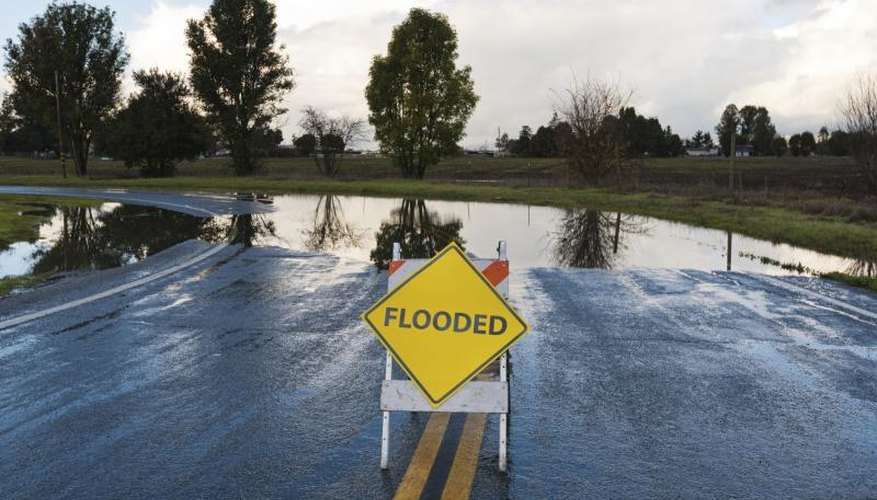
When you turn your outboard motor’s ignition key and it won’t start, then smell that stink of excess gas that indicates your outboard’s flooded, your heart might sink a bit, as if abandoned at a party by a friend who’s borrowed your car. Whether your outboard has a carburetor or fuel injection, shift to neutral, hold the throttle wide open and crank the engine. Called a “clear-flood start,” this can start your flooded outboard.
The Physics of the Wide Open Throttle
If your engine is equipped with a carburetor, moving the throttle to the wide-open throttle position -- or to the clear-throttle position, if your throttle is so designed -- opens the throttle plates inside the carburetor fully, allowing the free passage of air into the carburetor. If you have a fuel-injected engine, cranking your engine while at wide-open throttle notifies the engine's electronic control module to enter the clear-flood mode and withhold fuel, but not air, from the engine. This "excess air" then combines with and burns away the excess gas that flooded the engine.
Happens to Us All
An outboard floods when there's too much gas in the air-fuel mixture. The mix becomes so rich it won't burn. This might happen if you don't disengage the choke fully, if your outboard has low compression in one or more cylinders, if the engine's sensors fail or because a bit of gas -- more than can evaporate before you try to start it again -- continues to flow after you turn off your engine.
Time is On Your Side
Usually, with a flooded outboard, time is your friend. If the engine’s flooded, wait for five minutes, then try to clear-flood start it. Regardless of the cause of the flooding, the clear-flood start works, even if you must repeat the process several times. This gives any excess gas trapped in the carburetor or, in the case of fuel-injected engines, the injectors, time to evaporate.
Deeper Issues
A flooded outboard not only makes you uncomfortable for a moment, it might mean you need a mechanic when you return to shore. In fuel-injected outboards, the excess gas that causes flooding might result from leaking injectors, failed engine temperature sensors or a failed electronic control module, the engine’s on-board computer that controls engine operation. If the problem persists, a trip to your mechanic is in order.
A Note on Cranking
Don’t crank your outboard for more than 10 seconds at a time, whether flooded or not. You can crank it three times, but then, you must allow the starter to rest for two minutes before attempting to crank the engine again. This prevents heat damage to the starter and mechanical components, such as the Bendix drive that disengages the starter.
References
Writer Bio
Will Charpentier is a writer who specializes in boating and maritime subjects. A retired ship captain, Charpentier holds a doctorate in applied ocean science and engineering. He is also a certified marine technician and the author of a popular text on writing local history.



